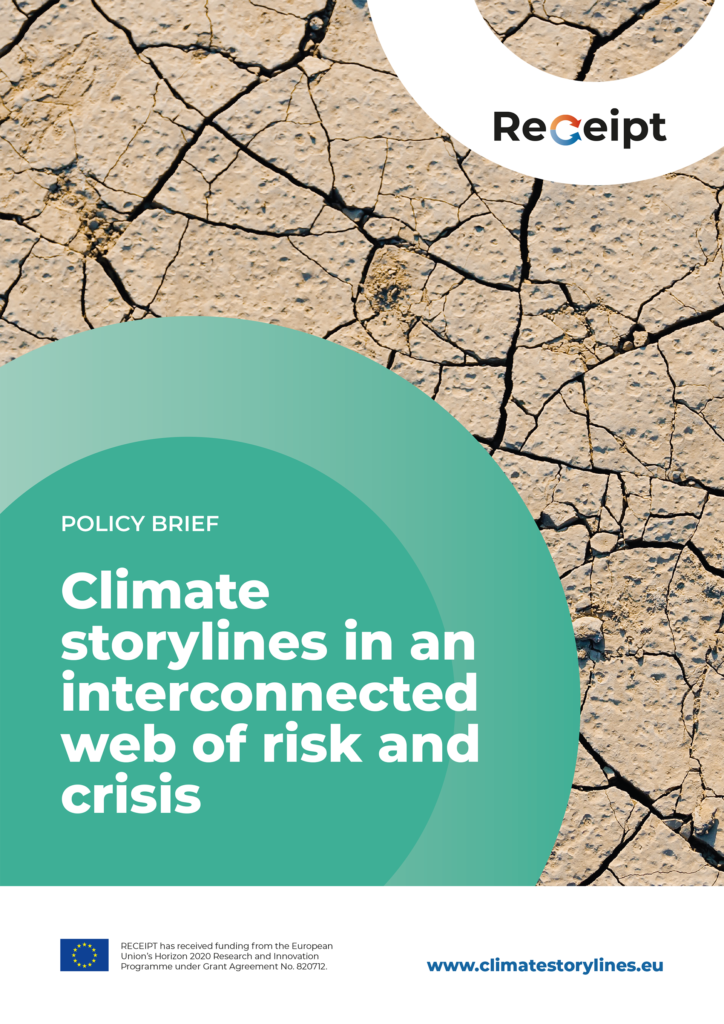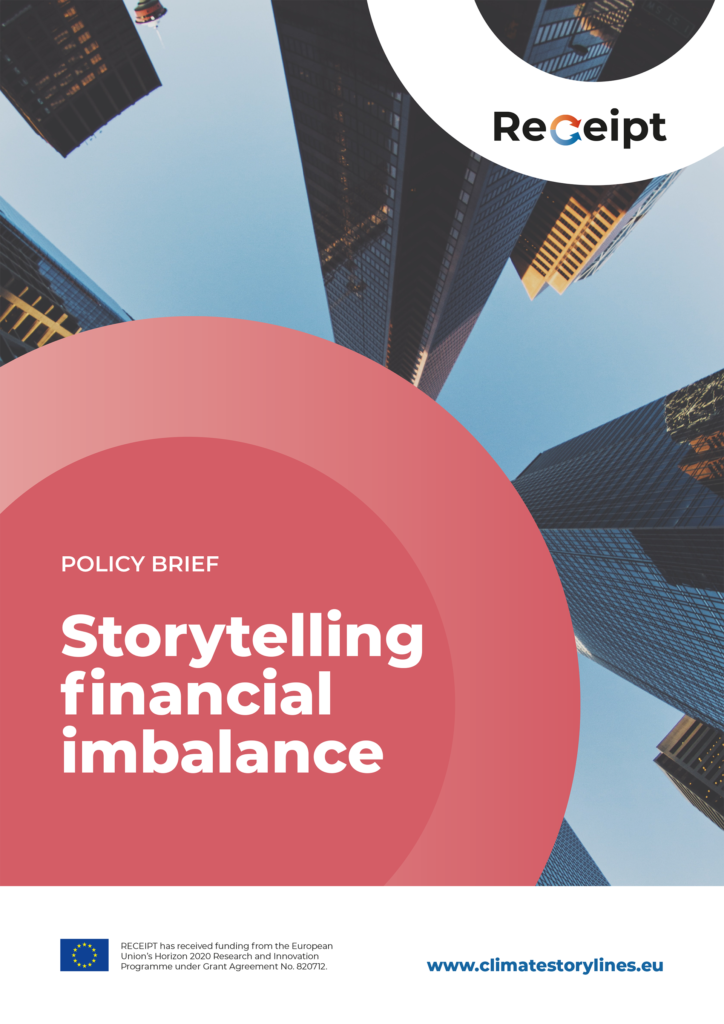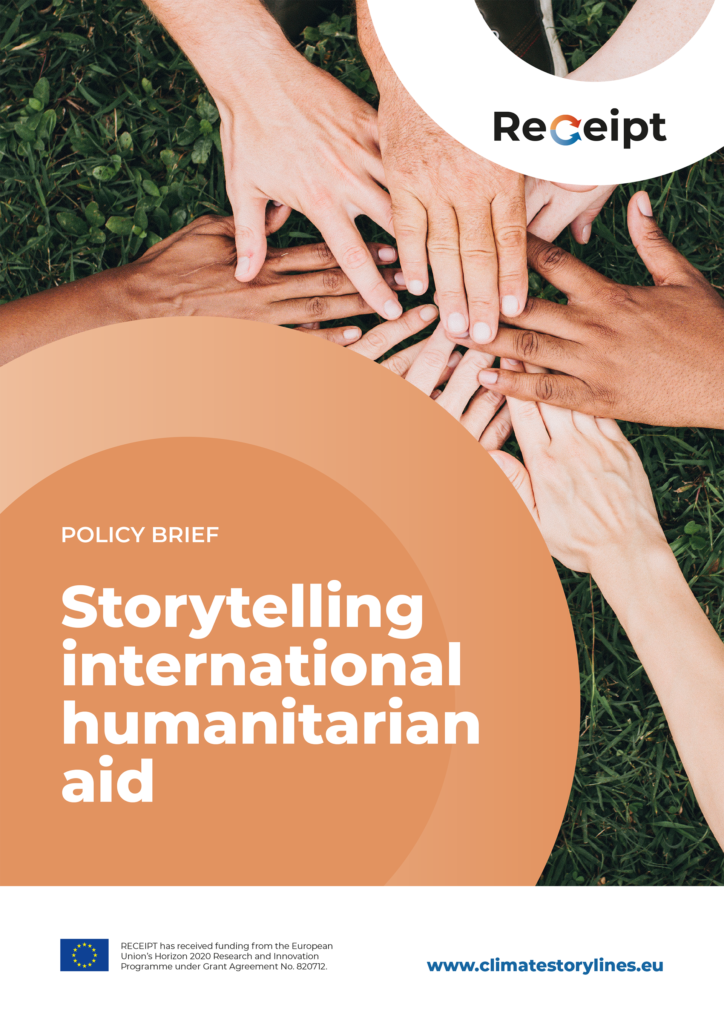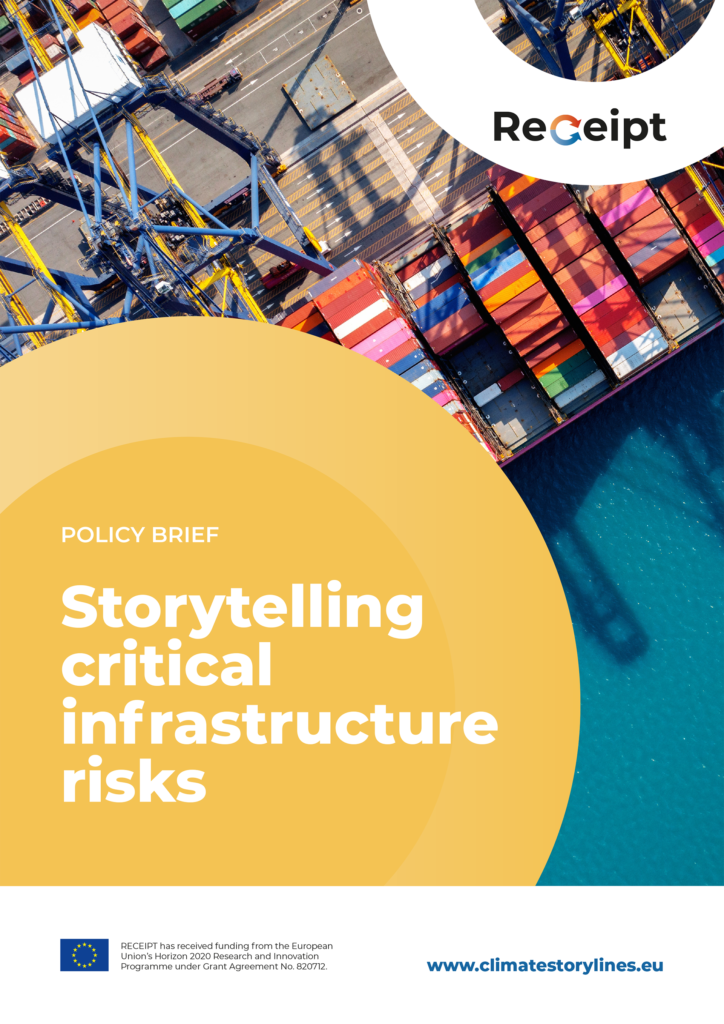
Climate storylines in an interconnected web of risk and crisis
• Navigating future protracted and overlapping crises requires grasping interconnected causes and embracing a comprehensive approach to climate risks.
• By combining the robustness of forensic risk diagnostics with foresight techniques, storytelling climate risks enhance advanced risk anticipation and the efficacy of stress tests.
• Collaboratively designed and standardised storylines of climate risks, developed in partnership with risk modelers, public authorities, and regulators, can significantly enhance climate intelligence to drive transformative change.
Read the policy brief here.

Storytelling food security
• Food security permeates a range of EU internal and external policies, underscoring its fundamental importance.
• Contingency strategies for food supply and affordability need to be based on risk scenarios shaped by climate extremes in Europe and beyond.
• Stress tests are crucial for resilience planning, analysing price shocks in food baskets and nutrition. A storyline approach is useful to explore unintended impacts of well-intentioned policies that could weaken, not strengthen, food and farming system resilience.
Read the policy brief here.

Storytelling financial imbalances
• Climate extremes’ impact and their influence on insurance markets, financial systems, and investment trends, entails substantial risks. Sound risk assessment can guide investment decisions in resilient economies.
• Constructing risk scenarios based on standardised narratives promotes clarity and consistency.
• Supervisory authorities should improve climate stress tests by incorporating atmospheric processes and frequently overlooked secondary effects.
Read the policy brief here.

Storytelling international humanitarian aid
• Climate change, alongside factors like environmental degradation, conflicts, and failed governance, amplifies the need for humanitarian assistance.
• Event-based narratives of climate and humanitarian risks can enhance anticipation of needs, contribute to more efficient prioritisation of funds, and guide actions to reduce future humanitarian interventions.
• Indices like the INFORM Risk and the Global Conflict Risk Index can inform EU foreign policy by connecting climate-security risks with development and peace initiatives, particularly when incorporating anticipated climate impacts.
Read the policy brief here.

Storytelling critical infrastructure risks
• Infrastructure is the cornerstone of societal progress, enabling economic growth, public health, safety, and environmental protection. Disruption to critical infrastructure can have far-reaching implications for EU security and the well-being of its citizens.
• Conventional climate risk assessments are not designed to address the complexities of critical infrastructure and their system interdependencies. Climate risk storylines can effectively illustrate the progression and propagation of risks.
• The risk assessment compelled by the EU legislations enhances the scope of climate risk assessments, offering potential improvements for financial and strategic evaluations. However, it also presents challenges in ensuring consistency and compatibility across assessments.
Read the policy brief here.
